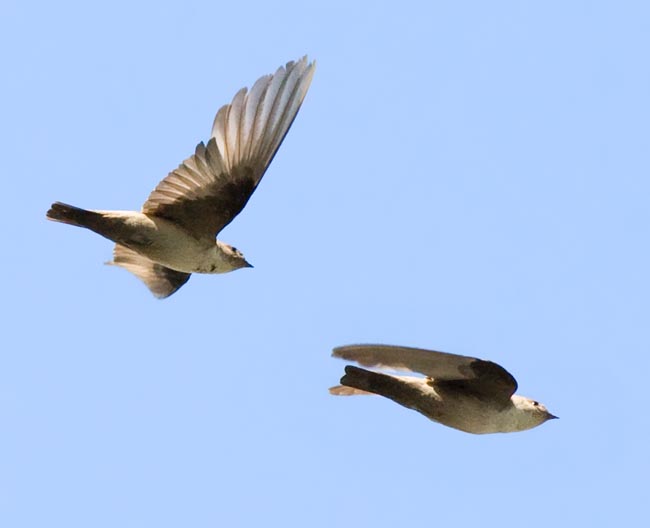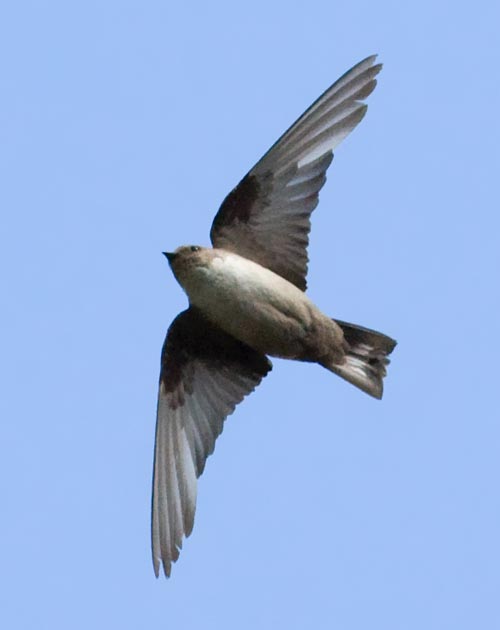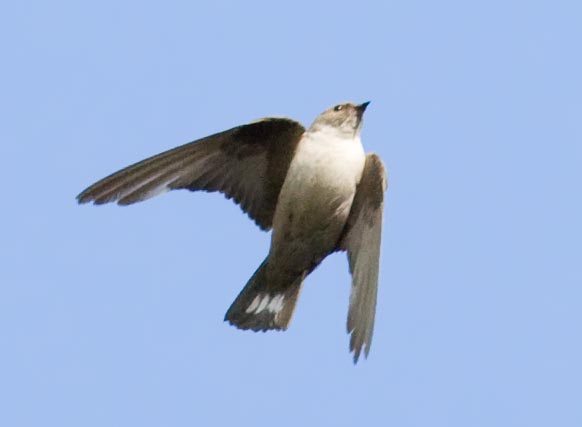Family : Hirudinidae

Text © DrSc Giuliano Russini – Biologist Zoologist

English translation by Mario Beltramini

A just taken off from the roof pair of Crag martin (Ptyonoprogne rupestris) © Giuseppe Mazza
These birds, like the other species of swallows, have the common characteristic of a continuous flight, hunting all the day long the insects they nourish of.
They rarely go down to the ground, mainly only for getting the mud and the straws with which they build up their nest.
But, if on the ground they are clumsy, hampered by the shortness of their legs, when in the sky, they are real and genuine acrobats, absolute masters of the means.
To observe these birds flying and their evolutions is a treat for the ornithological biologist’s eye.
Extraordinary flyers, they are swallows capable to chase their preys (insects which are equally able in the flight), at different altitudes over the ground, depending on the species and the different atmospheric conditions.

They are clumsy on the ground but it's a show when in the sky © Giuseppe Mazza
Zoogeography
Autochthonous of central-southern Eurasia, the crag martins are migratory and sedentary. The wintering quarters are located in the Mediterranean area, whilst sedentary pairs are present in the Madonie Mountains, in Sicily.
North, they do not pass the 48th parallel. These birds winter, south of their range, besides in the Mediterranean basin, also in North Africa.
Habitat-Ecology
The crag martin lives usually in rocky areas, from the sea level up to more than 2.000 m of altitude, with a special fondness for the sunny walls and the rocky ridges, where it nidifies.
But it may be found also in the urban areas, where it often builds up its nest on the towers or on the abandoned houses.
Morpho-physiology
Morphologically, it recalls the Sand martin (Riparia riparia), due to the brownish hues of the upper parts, and the Swallow (Hirundo rustica for the overall shape of the body and the beak. The tail of the crag martin, barely indented, is adorned with a series of oval white spots. There is absence of sexual dimorphism. When in flight, the silhouette of the bird appears dark to those looking at it from the ground. It may be 15 cm long, with a weight of about 22 g and little more than 30 cm of wingspan.

The tail is not forked and has the typical white oval spots © Giuseppe Mazza
It chiefly nourishes of butterflies, diurnal and nocturnal, which it always hunts while flying, skimming the rocky walls at incredible speed in a continuous coming and going. It also willingly hunts over the water streams. In this case, the choice preys are the just born mayflies and the dragonflies.
Ethology-Reproductive Biology
By late April (in Italy, between May and October), the male builds up a cup-shaped nest, where the female lays from 3 to 5 white, red-dotted, eggs, which will be hatched for 13-17 days. The young fly away when about 25 days old and there may be 1-2 clutches per year. The nidification, as we have seen, may take place on the sheer rock cliffs, as well as on old buildings, and also under the bridges, in the junction points.
While flying, in order to communicate with the other conspecifics, Ptyonoprogne rupestris emit a chattering noise.
→ To appreciate the biodiversity within PASSERIFORMES please click here.
